“Nobody knew you could do that, we always try to do things to break the normal order”: More than 30 years before Teenage Engineering, Kraftwerk saw the future of portable music-making and released a pocket calculator instrument
Marking an album that foresaw the 21st century’s computer-addicted society, Kraftwerk dropped their own branded handheld synth decades ahead of the trend
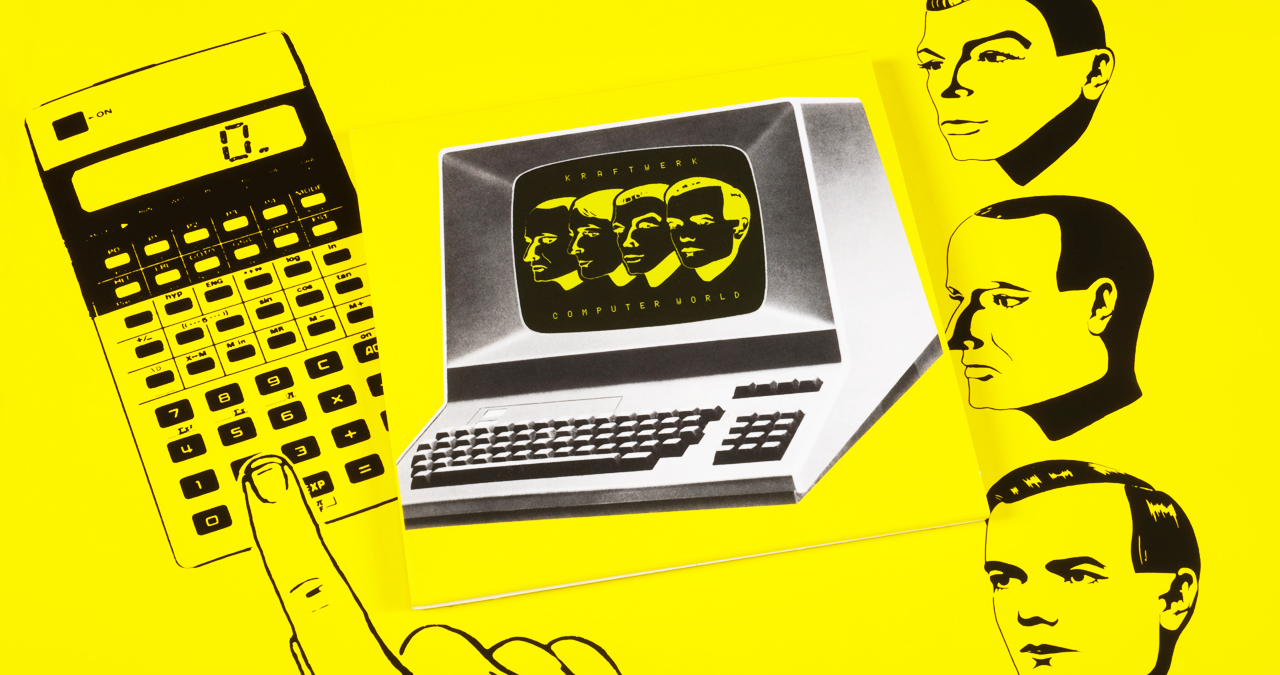
At times wide-eyed with geeky enthusiasm and at others fearful of an isolated techno-future, Kraftwerk’s eighth LP, Computer World, was the electronic pioneers' most prescient vision.
Hitting shelves in May 1981, right as the home computing market was beginning to power-up, Computer World’s seven tracks explored the fusions of tech and soul that might (read: definitely would) result from computerisation permeating both humanity's work and personal lives.
From instant communication to finding a virtual simulation of love, to easily programming electronic music and the omnipresent threat of digital surveillance, these ubiquitous 21st century concerns were astutely foretold on Computer Love.
“Our whole society is computerised,” Kraftwerk's co-linchpin Ralf Hütter told NME at the time. “[And] each one of us is stored into some point of information by some company or organisation, all stored by numbers.”
Its most captivating tracks - Computer Love, Numbers, It’s More Fun to Compute - were equally as forward-facing when it came to their arrangements.
Characteristic hi-tech sounds peppered these dense but emotive arrangements. Although Ralf, Florian Schneider, Karl Bartos and Wolfgang Flür used a range of synths and customised drum machines across the album (including the Roland System 700, Moog Polymoog, Prophet 5 and their tailored Fasfisa Rhythm Unit 10 and Vox Percussion King) its most notable moments stemmed from some unlikely sources…
“We take from everywhere,” Hütter told Aural Innovations. “That’s how we find most of our music. Out of what we find in the street. The pocket calculator in the department store…"
The four Germans concocted some peculiar sounds from a platter of quirky, and cheaper devices. In this way, Computer World's arrangements anticipated a future when electronic music-making was more accessible to all. Not just those with deep wallets.
The record incorporated commercially available programmable apparatus and toys such as a Texas Instruments Language Translator (aka; a Speak-and-Spell), a Dubreq Stylophone, a Casio FX-501P pocket calculator and even a cheap Bee Gees-branded hand-held drum machine - made by Mattel and aimed at children. Seriously.
The resulting sounds were odd, and slightly cheesy, but were unmistakably highly characterful. Their use fed into the record’s overall thematic conceit - that computers would slowly but surely seep into our everyday life via the proliferation of easily accessible hand-held devices. It was inevitable that these same devices would also be put to use by music-makers.
Want all the hottest music and gear news, reviews, deals, features and more, direct to your inbox? Sign up here.
Ever the trailblazers, when the album was released in 1981, the band had an idea that would enable their fans to connect and engage with the record’s underlying ideas in a groundbreaking way. Kraftwerk collaborated with Casio to develop their own branded version of their pocket calculator.
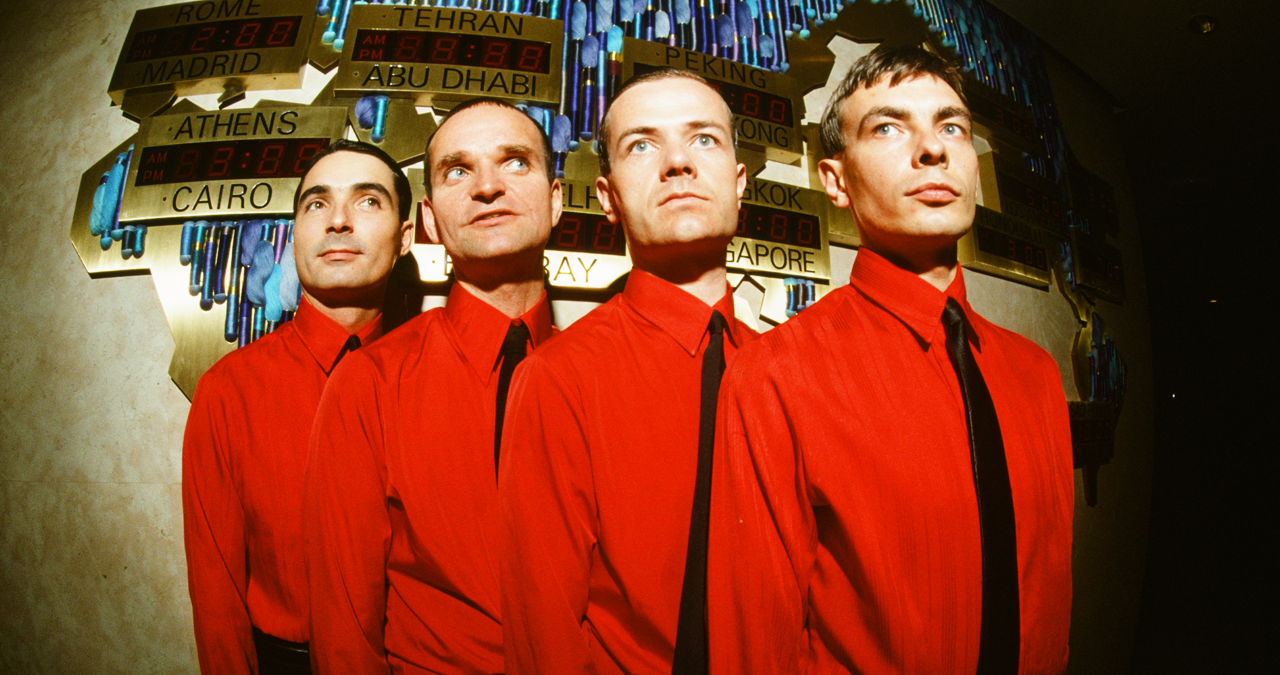
The four had used the Casio FX-501P prominently in the arrangement of the record’s first single, aptly titled Pocket Calculator, and were keen on demonstrating the potential musical applications of these increasingly commonplace items.
The quirky but irresistible joy of the single’s pulsing melody all served to enthusiastically spotlight the capabilities of calculators when brought into the electronic music world.
I'm the operator with my pocket calculator
I am adding and subtracting
I'm controlling and composing
By pressing down a special key, it plays a little melody
Though the song, to modern ears, might sound like a humorous novelty, what Kraftwerk were really trying to express here was that the cheap and immediate ability to create electronic music - a concept now commonplace in our world of smartphone DAWs and mobile synths - can be profoundly liberating and joyful.
It also revealed a new facet for a 'functional' electronic apparatus, imbuing the otherwise soulless mini-machine with a life-force and personality as it operated within a creative context.
“Our idea is to take computers out of context of those control functions and use them creatively in an area where people do not expect to find them,” Ralf told NME. “Like using pocket calculators to make music, for instance. Nobody knew you could do that, we always try to do things to break the normal order. It’s about time technology was used in resistance, it shouldn’t be shunned, reviled or glorified.”
Though it’s the FX-501P that appeared on the track and, in illustrated form, on the single’s cover, it was the VL-80, also from Casio, that Kraftwerk had designs on…
Hailed in the annals of music production history for bringing the first affordable synth to shelves in the shape of the VL-1, the Japanese company was the market leader when it came to advanced arithmetic calculators. The Casio VL-80 had 8 digit precision and algebraic logic, and sported 6 functions, 25 keys as well as a snazzy LCD display.
Working with Casio, Kraftwerk designed a co-branded iteration of the Casio VL-80 calculator (aka the ‘Taschenrechner’) that had a small synthesiser engine built into it. This engine was capable of playing 100 musical keys over two octaves yet lacked any understanding of rhythm. However, users could increase or decrease the speed of playback. Its small buttons were each allocated to a major scale note.
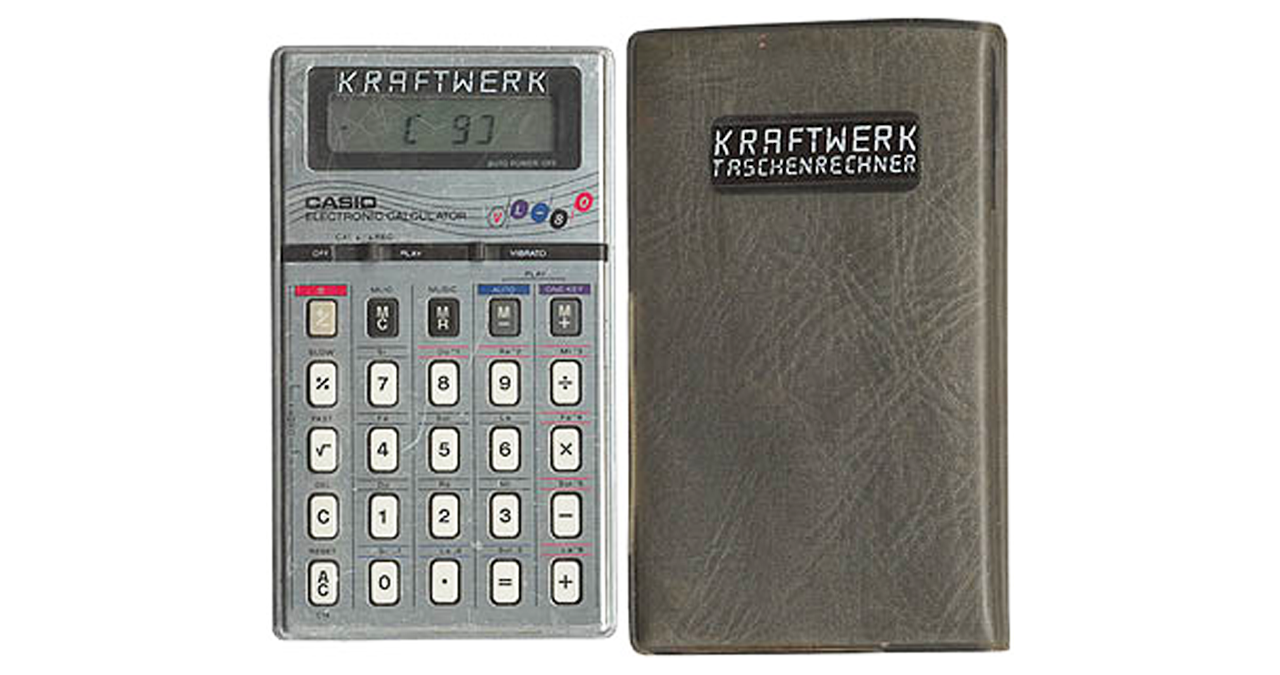
The limited number of calculators, sold mainly during Kraftwerk's Computer World tour, came within a Kraftwerk logo-emblazoned pouch and an accompanying manual which included a ‘melody guide’.
Basically, this guide listed the precise button inputs required to (slowly and carefully) instruct your calculator to play the melodies of a number of Kraftwerk’s most notable tracks.
These included The Model (Das Model), Trans Europa Express and, yes, Pocket Calculator (Der Taschenrechner).
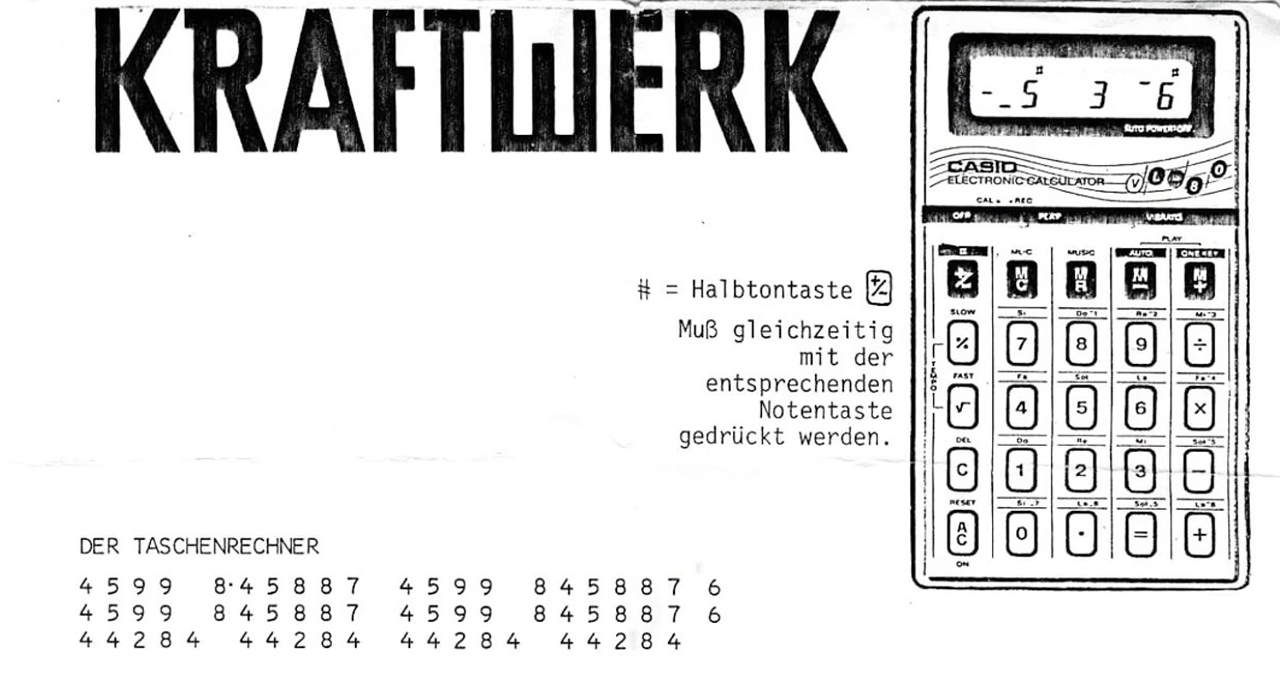
Calculators - operated by Karl and Florian - would become a prominent performance tool during the ensuing Computer World tour.
Bartos and Schneider would dance, slightly ridiculously, whilst ‘playing’ their calculators, and the group encouraged those who had purchased the Kraftwerk VL-80 to play along. This absurdist spectacle was a far cry from the emotionless, planted ‘robots’ the band usually embodied on stage.
“We generally keep our audience contact to a metaphysical level - really because we have little time to look around - although we are very aware of their response. The only exception is with Pocket Calculator,” said Ralf Hütter of this in Electronics and Music Maker.
Now, in our smartphone-dominated age (of which the humble pocket calculator can be seen as a primitive forebear) the very processor-dictated future that Kraftwerk imagined has come to pass. And then some…
With the daily dopamine hits of social media and disposable short-form video content beamed into our eyes instantaneously, it really has become ‘more fun’ to compute.
For better and very much, as Kraftwerk feared, for worse.
“When we listen to this remarkable album today, we hear the visionary image of a bright future that our present reality has never managed to live up to,” wrote author Uwe Schütte in his remarkable book, Kraftwerk: Future Music from Germany.
“[On] Computer World, Kraftwerk not only displayed a remarkable degree of foresight in predicting a human future based on computer technology but, crucially, backed this up with an uncompromising and crisp vision of the emerging sound of the future.”
Computer World is now looked back on as one of Kraftwerk’s most dazzling and thought-provoking albums, and those branded VL-80s have gone down in history as iconic examples of early artist-associated music technology.
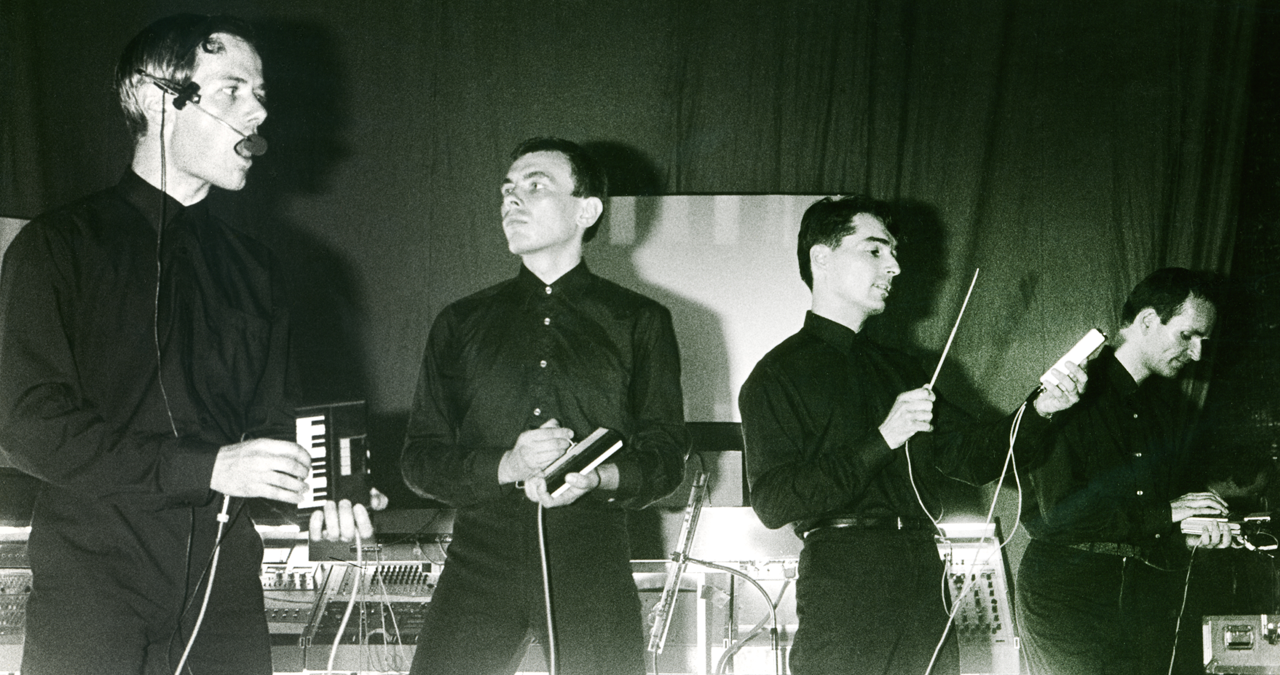
Painstakingly programming the melodies and joyfully playing them back in their bedrooms, Kraftwerk fans - even those without any understanding of music theory - suddenly felt like they too were experiencing the joy of technological discovery along with Ralf and Florian. Best of all, they hadn't had to fork out thousands of pounds for unobtainable synthesisers.
The seeds of the democratisation of electronic music-making were being planted.
The enduring influence of Kraftwerk’s VL-80’s can be felt in the gamut of handheld musical instruments that are still immensely popular with musicians today.
You only need to look at the uber-cool perception of Teenage Engineering’s Pocket Operators (POs) to see that the impact of Kraftwerk’s pioneering ‘order-breaking’ ethos lives on.


I'm Andy, the Music-Making Ed here at MusicRadar. My work explores both the inner-workings of how music is made, and frequently digs into the history and development of popular music.
Previously the editor of Computer Music, my career has included editing MusicTech magazine and website and writing about music-making and listening for titles such as NME, Classic Pop, Audio Media International, Guitar.com and Uncut.
When I'm not writing about music, I'm making it. I release tracks under the name ALP.
You must confirm your public display name before commenting
Please logout and then login again, you will then be prompted to enter your display name.

